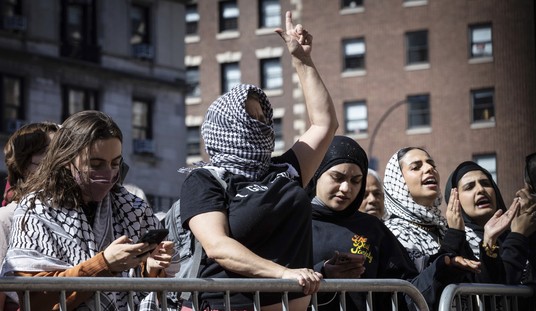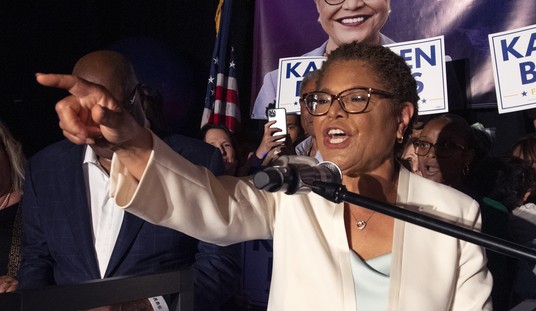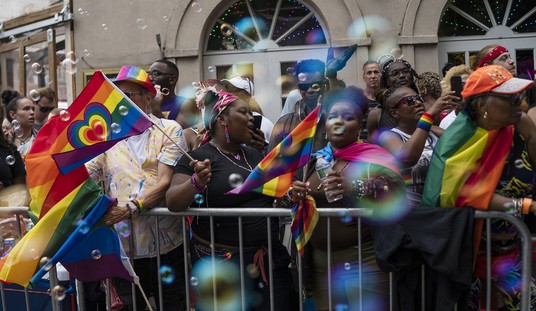With far less fanfare, the new Biden administration’s disinformation task force may be far more dangerous.
It was a classic and beautiful example of the cliche, Sunlight is the best disinfectant. After the Department of Homeland Security trotted out its deeply flawed Disinformation Governance Board — headed by the deeply problematic Nina Jankowicz — a growing list of revelations and exposed details derailed the new enterprise. Within weeks, the DGB was deader than CNN+, with a matching lifespan.
Widespread resistance and public derision aside, the Biden administration has decided to reinvigorate its effort at thought control. Labeled “White House Task Force to Address Online Harassment and Abuse,” the game plan is to collocate a group that will monitor and police social media platforms. It looks to be even more pernicious than that previous incarnation. This time the plan will be to have it headed up by Kamala Harris, which is the lone positive aspect of this announcement; her history of incompetence and sloth on past assigned duties, such as the border enforcement, means this is also potentially doomed.
The first sign of trouble is how the announcement invokes the recent shootings in Buffalo, and Uvalde. This should ping the radar of most people, as it delivers the sense of a similar reaction to these violent acts regarding guns. The tendency to lean on tragedies like those in order to push a new liberty-threatening agenda is all too familiar, the difference this time being the amendment being targeted.
Then there is the announced scope of this revitalized attack on expression. No longer is this only under the purview of Alejandro Mayorkas at DHS. Along with him, Biden has brought in members from the National Security Council, including Attorney General Merrick Garland, Anthony Blinken from the State Department, and Xavier Becerra from HHS. Also at the press conference announcing ceremony was the Surgeon General, Vivek Murthy. Just absorb for a moment now the scope of this thought crime task force.

At the press conference, Vice President Harris gave the podium to professional tennis player Sloane Stephens, who testified to being the target of bad voices online. It was an odd moment because who among us has not experienced some form of online abuse? Here is a star athlete complaining about something we all have and do endure, but the celebrity aspect is key. The announcement from the White House outlined the focus of their energy on disinformation.
In the United States and around the world, women and LGBTQI+ political leaders, public figures, activists, and journalists are especially targeted by sexualized forms of online harassment and abuse, undermining their ability to exercise their human rights and participate in democracy, governance, and civic life.
That is a rather superior mission statement. This task force, headed by the power brokers in D.C., will be ensuring that online abuse will not be targeting politicians, celebrities, media figures, and other notables. The elitists must be protected from us, the rabble.
Recall, the DGB plot unraveled when, among the oppressive intents discovered, Jankowicz was found to have supported a plan to have verified people on Twitter granted the power to edit the tweets of users, based on their own standards of misinformation. This new task force is just as overreaching in its plans. At the presser, Murthy revealed this as one of the goals.
“It can no longer be acceptable for a technology company to put out a product and walk away from the responsibility for how it impacts users and communities. It can no longer be okay for social media platforms to be fertile grounds for hatred.”
This reconstituted police force is not free of the Jankowicz platform either. Among the items that Biden’s new task force refers to as a reference point is a government report commissioned from Texas A & M that cites past writings of Jankowicz, so the echoes are more than suggested; they are heard directly.

More reason for pause is that Nina’s old boss Mayorkas had been challenged in a Congressional hearing on the revelation that they had misrepresented the scope of the DGB. Basically, as Mayorkas claimed they were protecting free speech, internal memos showed they were coordinating with Twitter executives to silence voices on the platform they deemed were misleading or otherwise dangerous.
That Jankowicz was exposed as being a source of prominent misinformation herself – she was shown to have discredited proven facts as well as backing disinformation stories such as the Steele Dossier – underscores the way that this new task force can also drift into policing approved speech.
Another notable difference with this new attempt is the media reaction. While many outlets have covered the announcement, we do not see as many pundits touting the plan, as they had with the DGB. MSNBC raved about the plan, the AP saw it as a valid enterprise, and of course, Brian Stelter declared enthusiastically the White House battle against disinformation “sounds like common sense.”
This time around, the cheerleading is notably muted, almost as if the journalists realized that highlighting the plan exposed the plot behind it. We need to keep the pressure on this administration’s attempt, as it is more widespread than its previous disaster and they all seem to have learned what needs to be shielded from the public so it does not go awry. This new plan is already showing signs of the need to cast more sunlight on what is taking place.














Join the conversation as a VIP Member